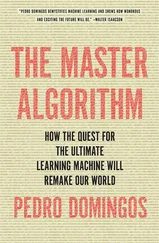Some boards are colorful and most finished ones please the eye. A computer’s boards seem to show order triumphing in complexity. They look as if they make sense, but not in the way the moving parts of an engine make sense. The form on the surface of a board does not imply its function. It’s difficult but possible to get inside the littlest boxes inside the boxes that constitute a modern computer, and bringing back the details, to create a functionally equivalent copy of the machine. Reverse engineering is the name for that art.
West called it “knockoff copy work.” He had a cleaner, simpler purpose. He examined the outside of the VAX’s chips—some had numbers on them that were like familiar names to him—and he counted the various types and the quantities of each. Later on, he looked at other pieces of the machine. He identified them generally too. He did more counting. And when he was all done, he added everything together and decided that it probably cost $22,500 to manufacture the essential hardware that comprised a VAX (which DEC was selling for somewhat more than $100,000). He left the machine exactly as he had found it.
“I’d been living in fear of VAX for a year,” West said afterward, while driving along 495 one evening. “I wasn’t really into G-Two. VAX was in the public domain and I wanted to see how bad the damage was. I think I got a high when I looked at it and saw how complex and expensive it was. It made me feel good about some of the decisions we’ve made.”
Looking into the VAX, West had imagined he saw a diagram of DEC’s corporate organization. He felt that VAX was too complicated. He did not like, for instance, the system by which various parts of the machine communicated with each other; for his taste, there was too much protocol involved. He decided that VAX embodied flaws in DEC’s corporate organization. The machine expressed that phenomenally successful company’s cautious, bureaucratic style. Was this true? West said it didn’t matter, it was a useful theory. Then he rephrased his opinions. “With VAX, DEC was trying to minimize the risk,” he said, as he swerved around another car. Grinning, he went on: “We’re trying to maximize the win, and make Eagle go as fast as a raped ape.”
Some of the engineers closest to West suspected that if he weren’t given a crisis to deal with once in a while, he would create one. To them he seemed so confident and happy in an emergency. But as for this big crisis in the little world of Westborough engineering, although West had made it his own, no one could say he had invented it.
Why had Data General failed to produce a rival to VAX? When trade journalists asked this question, Data General put on a bold face of course, and suggested in essence that all was proceeding according to plan. In fact, years before the appearance of VAX, Data General engineers had foreseen the advent of such machines. For about five years they had been trying to produce one of their own. But there had been problems. They had made some false starts, and the engineers involved had been arguing over who was going to produce this new machine and what it would be.
Some computer engineers harbor strong feelings toward their new designs, like Cossacks toward their horses. Carl Alsing, a veteran engineer and one of West’s cadre, told the fable of an engineer, who, upon being informed that his plans for a new machine had been scrapped by the managers of his company, got a gun and murdered a colleague whose design had been accepted. Alsing said he thought that such a murder really happened but that a woman was probably involved—yet it came, he said, to much the same thing.
The history of what West and some of his associates called their “wars” began in the mid-seventies. Data General had gotten over its manufacturing problems; the fuss over the Keronix affair had long since died down and the company had been growing apace. They had followed up on the instantaneous success of their first CPU, the NOVA, by producing a whole line of compatible NOVAs, and while those computers kept selling and selling, they had created another and generally more powerful line of machines, called the Eclipse. Like the NOVA, it was a hit. The Eclipse line was just beginning to grow, however, when the leader of the Eclipse Group began to leave his team. He went away to invent the next kind of Data General computer. As it developed, this became a grand project. Among other things, it would solve one of the important technical questions then on the horizon. This problem lay in the question of how best to enlarge the minicomputer’s “logical-address space.” This was the problem that superminis like VAX would address, by achieving what one wag called “thirty-two-bit-hood.”
Computers, it is often said, manipulate symbols. They don’t deal with numbers directly, but with symbols that can represent not only numbers but also words and pictures. Inside the circuits of the digital computer these symbols exist in electrical form, and there are just two basic symbols—a high voltage and a low voltage. Clearly, this is a marvelous kind of symbolism for a machine; the circuits don’t have to distinguish between nine different shades of gray but only between black and white, or, in electrical terms, between high and low voltages.
Computer engineers call a single high or low voltage a bit, and it symbolizes one piece of information. One bit can’t symbolize much; it has only two possible states, so it can, for instance, be used to stand for only two integers. Put many bits in a row, however, and the number of things that can be represented increases exponentially. By way of analogy, think of telephone numbers. Using only four digits, the phone company could make up enough unique numbers to give one to everybody in a small town. But what if the company wants to give everyone in a large region a unique phone number? By using seven instead of four digits, Ma Bell can generate a vast array of unique numbers, enough so that everyone in the New York metropolitan area or in the state of Montana can have one of his own.
Inside certain crucial parts of a typical modern computer, the bits—the electrical symbols—are handled in packets. Like phone numbers the packets are of a standard size. IBM’s machines have traditionally handled information in packages 32 bits long. Data General’s NOVA and most minicomputers after it, including the Eclipses, deal with packages only 16 bits long. The distinction is inconsequential in theory, since any computer is hypothetically capable of doing what any other computer may do. But the ease and speed with which different computers can be made to perform the same piece of work vary widely, and in general a machine that handles symbols in chunks of 32 bits runs faster, and for some purposes—usually large ones—it is easier to program than a machine that handles only 16 bits at a time.
In this case, the main issue was the computer’s storage system. Here, in packages of symbolic bits, are kept both information for the computer to manipulate and also many of the instructions that tell the computer what to do with that data. The situation resembles that of a region’s telephone system; phones are of no use unless they are distinct one from the other, and an item in a computer’s storage system is of no use unless it can easily be found. And the general solution resembles the phone company’s; each compartment in the computer’s storage has its own “phone number,” its own unique symbol, known as an address. A 16-bit machine can directly generate symbolic addresses only 16 bits long, which means that it can hand out to storage compartments only about 65,000 unique addresses. A true 32-bit machine, however, can directly address some 4.3 billion storage compartments.
Some of Data General’s old customers and many potential new ones needed, or soon would, the large “logical-address space” of a 32-bit machine. Although other customers had no such needs as yet, a general feeling held that 32-bithood would become a de facto standard in the industry. You had to produce a 32-bit machine.
Читать дальше











